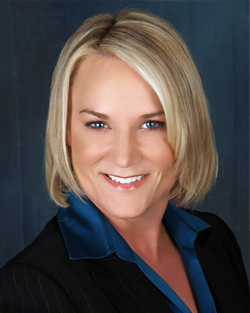
Kelly McDonald
Article by Kelly McDonald
It doesn’t matter where you live – across the world, demographics are changing quickly and increasingly, you are working with people who are not like you. They may be of a different race or ethnicity, may not speak your language fluently, may come from different countries, cultures or backgrounds, may be gay, lesbian, bisexual or transgender, may be of a different generation or may simply have a different approach to work than you have.
And demographics aren’t the only way we can be different from one another. Consider these diverse types of personalities and traits:
- Morning people vs. night owls
- Introverts vs. extroverts
- Parents vs. non-parents
- Creative thinkers vs. analytic thinkers
- Listeners vs. talkers
- Tech-savvy vs. tech-phobic
So how do you work effectively with someone that you may not see eye-to-eye with or who has a totally different approach to work than you do? And as a leader, how do you bring your diverse team together to be productive, in spite of their differences?
Here are four tips for working in a diverse environment:
Tip 1: Find Common Ground.
When working with someone who is different from you, the first thing you typically see are the differences: their gender, age, style of dress, color of skin, etc. But people are people – we all have families and friends, pets or kids or hobbies and sports, favorite foods, movies or books or articles we like. When you find common ground with another person, it becomes a shared bond – something that connects you. You can use anything to start a conversation with someone, with the goal of finding common ground. For example, if someone is wearing a sports ballcap, I will ask if that’s their favorite team. Even if there is nothing else to go on besides weather or temperature, I will use that as a conversation starter. Here are some examples:
- “That’s a cool necklace you have on. My mom makes jewelry – where do you find your pieces?”
- “Your lunch looks and smells so good – do you cook? I am trying to do more cooking these days.”
- “Do you think they’ll ever fix the heat in this building? Are you as cold as I am?”
Tip 2: Agree to Disagree.
Different perspectives, approaches and viewpoints can often lead to friction at work. Not everyone sees things the same way and this can result in challenges and tension when people try to “win” an argument or persuade others to their point of view. Instead, say: “I see it differently.” This phrase works magic, because when you say, “I see it differently”, you’re not being antagonistic, judgmental or superior. You’re not being combative or even trying to persuade the other person. You’re simply stating that you see it differently. This will likely lead to a constructive conversation about how you see things. You’ll share your point of view and a discussion will follow. These four words can turn a debate into a discussion.
Tip 3: Take the Emotion Out of It.
Most of us try mightily to like the people we work with. And we may feel like we’re doing something wrong when we just don’t like someone. Perhaps we feel we should just try harder. But liking and disliking are emotions and at work, you can leave emotion out of it. You don’t have to like someone to be able to work effectively with them. You don’t have to have them over for dinner or socialize with them. You just have to work with them. Sports teams do this all the time: a woman who plays on a soccer team once told me that she didn’t really like about half of the people on her team. “But when we get out on the field, we have a job to do and we do it.” When you realize that it’s OK to not like someone, it frees you to focus on the job at hand. Of course, you must be respectful and professional at all times, but you don’t have to like someone to work on a budget forecast with them.
Tip 4: Sometimes People Are Going to Say the Wrong Thing. Bring it Back to Business.
A client of mine told me about an engineer at their company who was in a meeting and was “peacocking” a bit – trying to show the rest of the group how smart he was. Someone made a suggestion and he replied, “That’s the most retarded idea I’ve ever heard.” It was an outrageously offensive comment. Everyone knew this guy was not trying to mock mentally disabled people. He was likely using a word he’s used all his life, completely unaware of how inappropriate and offensive it is. My client addressed the issue and said, “Howard, I’m sure you didn’t mean that the way it sounded. Please don’t use that word again – it has no place in this business conversation.” The engineer was mortified. He truly hadn’t realized he’d said that and he was remorseful. But the fact that his supervisor brought the conversation back to business, immediately, kept the focus on constructively moving the business forward. Obviously, if this continued to be a problem, the company would have to address it, but sometimes people say the wrong thing, not out of malice or meanness, but out of ignorance and carelessness. Give people one chance to right the wrong and bring it back to business.
Kelly McDonald is a popular speaker who specializes in consumer trends and changing demographics. She is the president of McDonald Marketing www.mcdonaldmarketing.com and the author of three bestselling books:
- “How to Market to People Not Like You”,
- “Crafting the Customer Experience for People Not Like You”
- “How to Work With & Lead People Not Like You”
